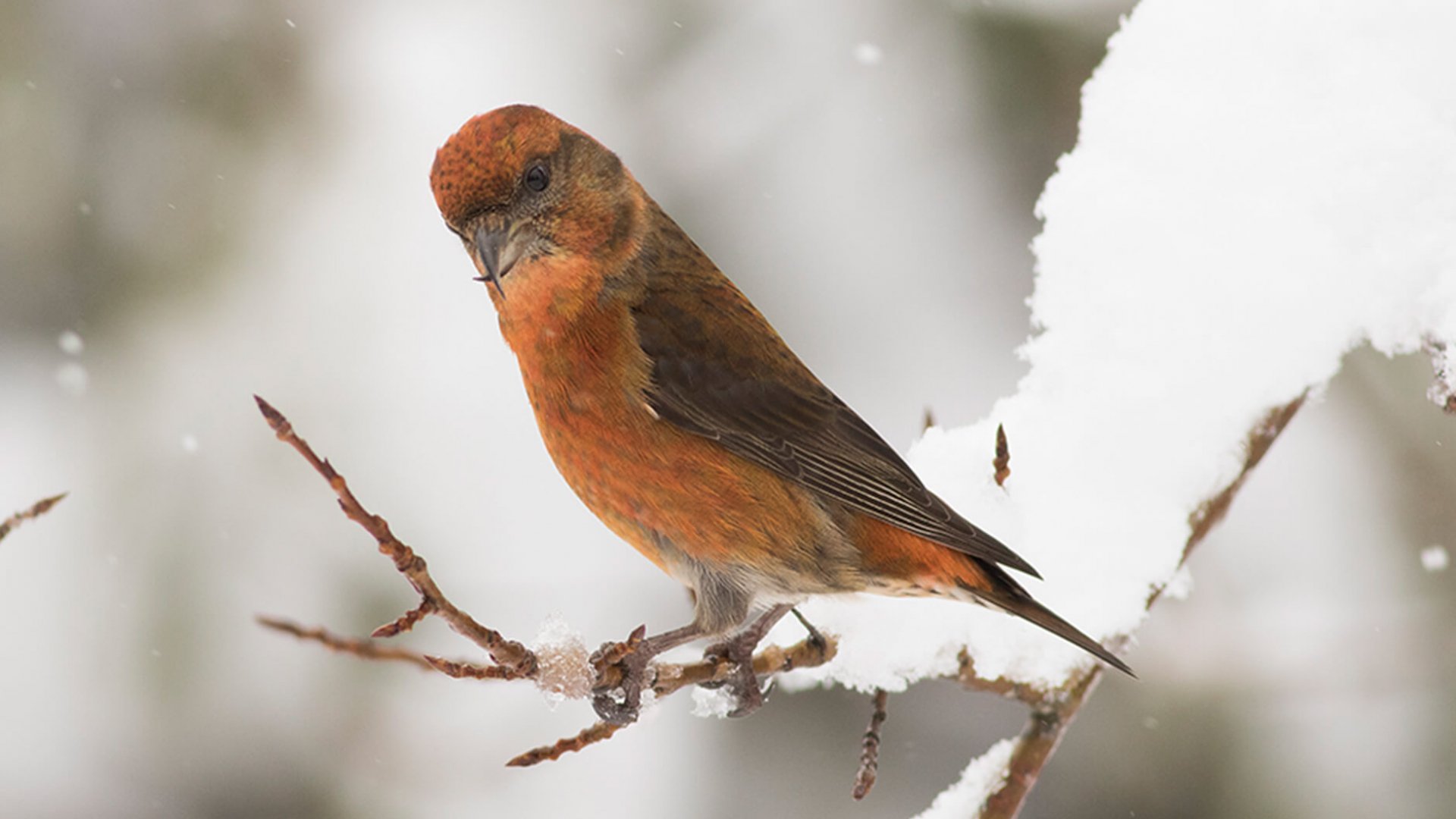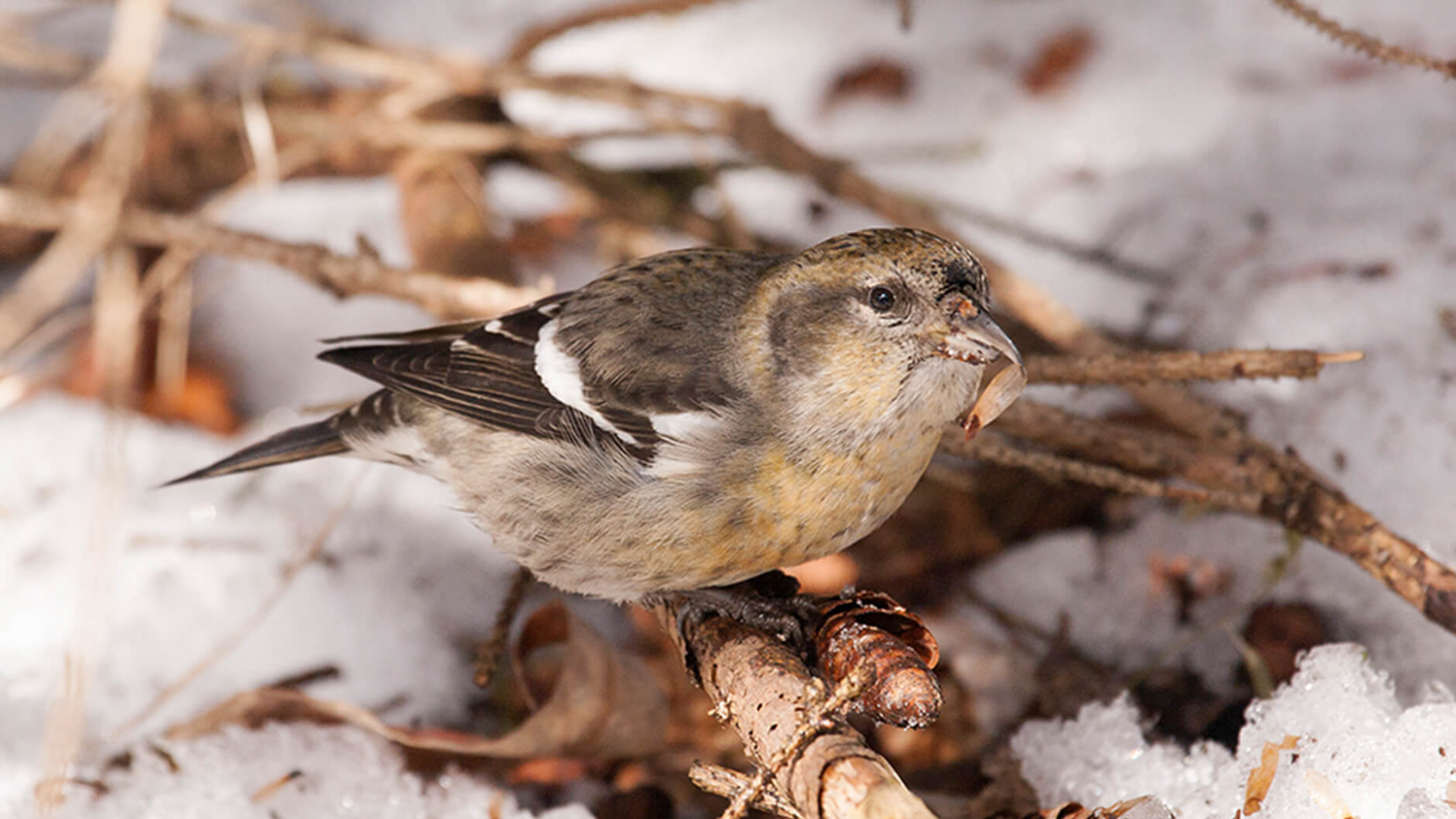The nomadic winter finches are irruptive migrants who plan their travels based on food supply
Bird migration is one of the most remarkable phenomena in the animal kingdom. Migration is found in most animal groups with examples like monarchs, lobsters, eels, and blue whales to name a handful but no animal group does it better or more spectacularly than birds. Migration is usually seasonal and almost always in response to the availability of food resources. Most of our songbird species arrive into Ontario in April and May to take advantage of the rich invertebrate life. They set up territories, build their nests, raise their young and then migrate back south by the end of September. Many of our waterbirds—loons, grebes, ducks, and swans—return to Southern Ontario in autumn and leave again in early spring. This time their passage is to northern breeding sites in the Boreal Forest and the Arctic as the land and waters thaw and their aquatic food resources once again become available.
And then there are the winter finches. From a museum and taxonomic perspective, finches are passerines (songbirds) in the family Fringillidae. There are approximately 170 species world-wide with 10 breeding species in Ontario. Most are the same size, or slightly larger, than a sparrow with red or yellow colouring. They have strong conical bills for eating seeds and during the summer are widely distributed across the Boreal Forest. Two of the most unique members of the group are the red crossbill and the white-winged crossbills. As their name implies, their bills cross at the tips. This crossed bill is very effective in helping the birds pry open various conifer cones and extract the seeds from within. Like all of our finches, they are also irregular in their winter wanderings. Crossbills are known as irruptive migrants. Simply put, crossbills follow the food.
Cone and seed production in most tree species is extremely variable. Depending on a number of climactic factors and previous cone production spruce pine and tamarack may have an abundant cone crop in one area of the country one year followed by almost nothing the following year. When there is a good cone crop in the Boreal Forest, crossbills stay north. When it’s a bad cone crop, crossbills move long distances, often in large flocks to find better resources.
These birds are also particular in their seed choices. Red crossbills in Ontario have a preference for white pine. White-winged crossbills prefer white and black spruce. And, unlike almost any other bird species in the Province with the exception of the rock pigeon, crossbills can breed any time of year providing they have enough food to lay eggs and raise their young. In the case of the white-winged crossbill, there are generally three nesting periods aligned with the availability of seed production in different conifers. January and February if there is a good crop of white spruce, March to June with black spruce, and July to November as seeds mature on white spruce and tamarack. Nests are sturdy structures well hidden in a conifer. They are well insulated with lichens, plant fibres, moss, hair, and cocoons. The female builds the nest, incubates the eggs and is responsible for brooding the young. Males defend the territory but will also come to the nest to feed the female or help with feeding of the young.
Life for the crossbills is a nomadic existence, with some unusual challenges that most bird species do not contend with. For birders, an irruption year of winter finches is always a welcomed surprise.
Explore More
More information on the annual Winter Finch Forecast.


